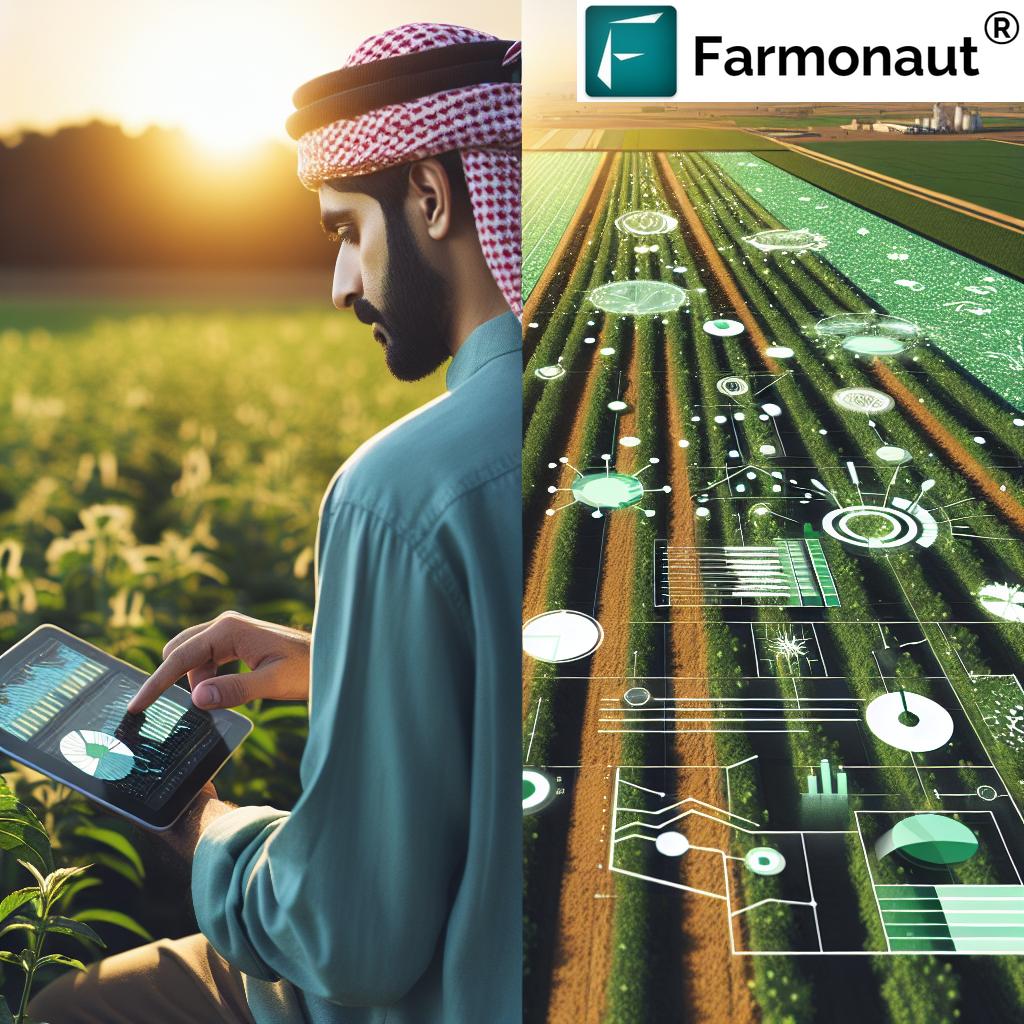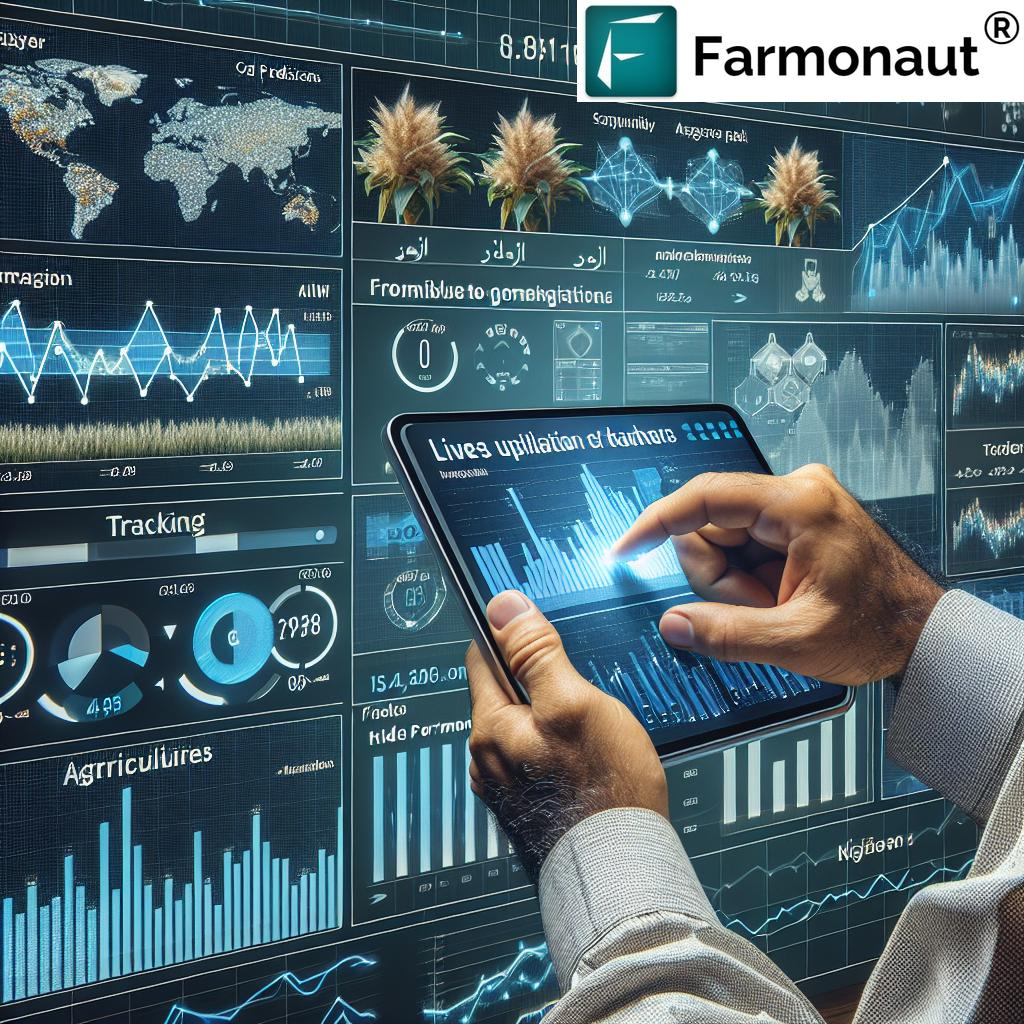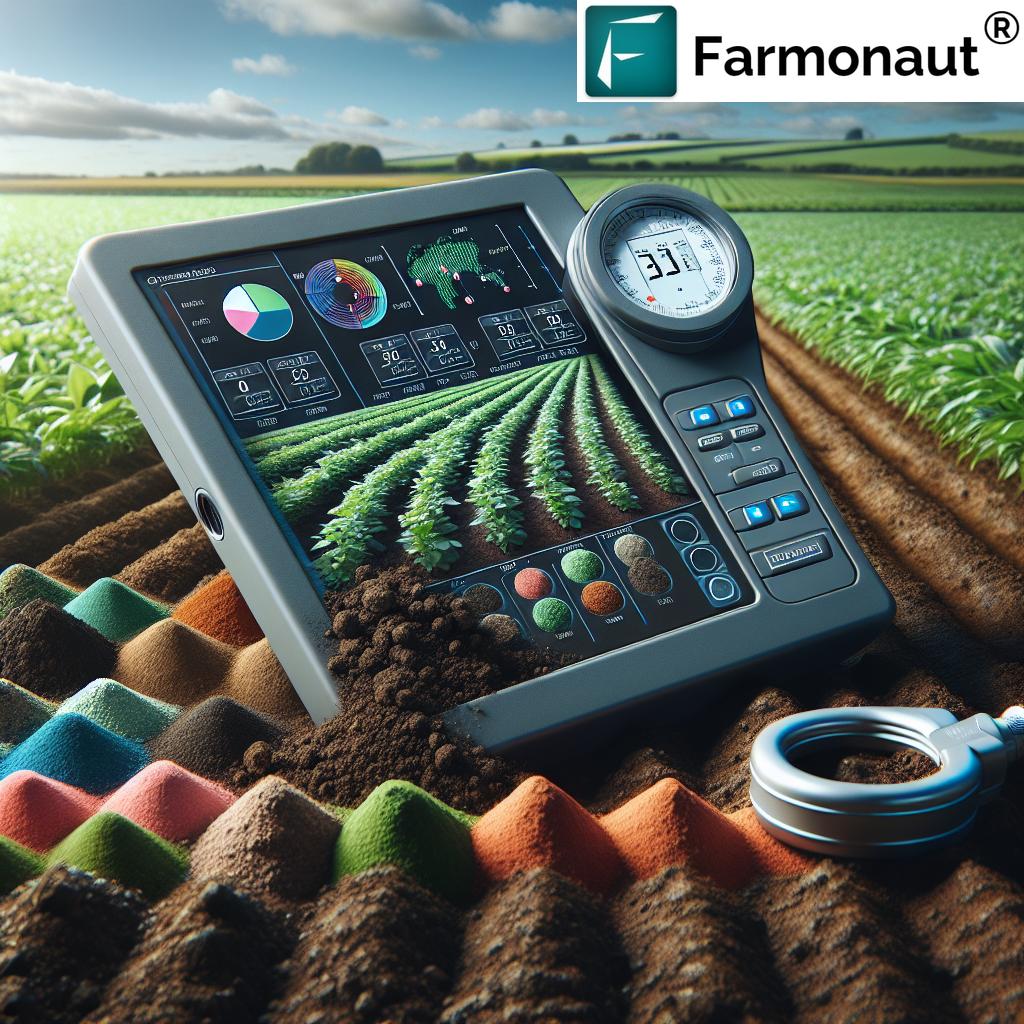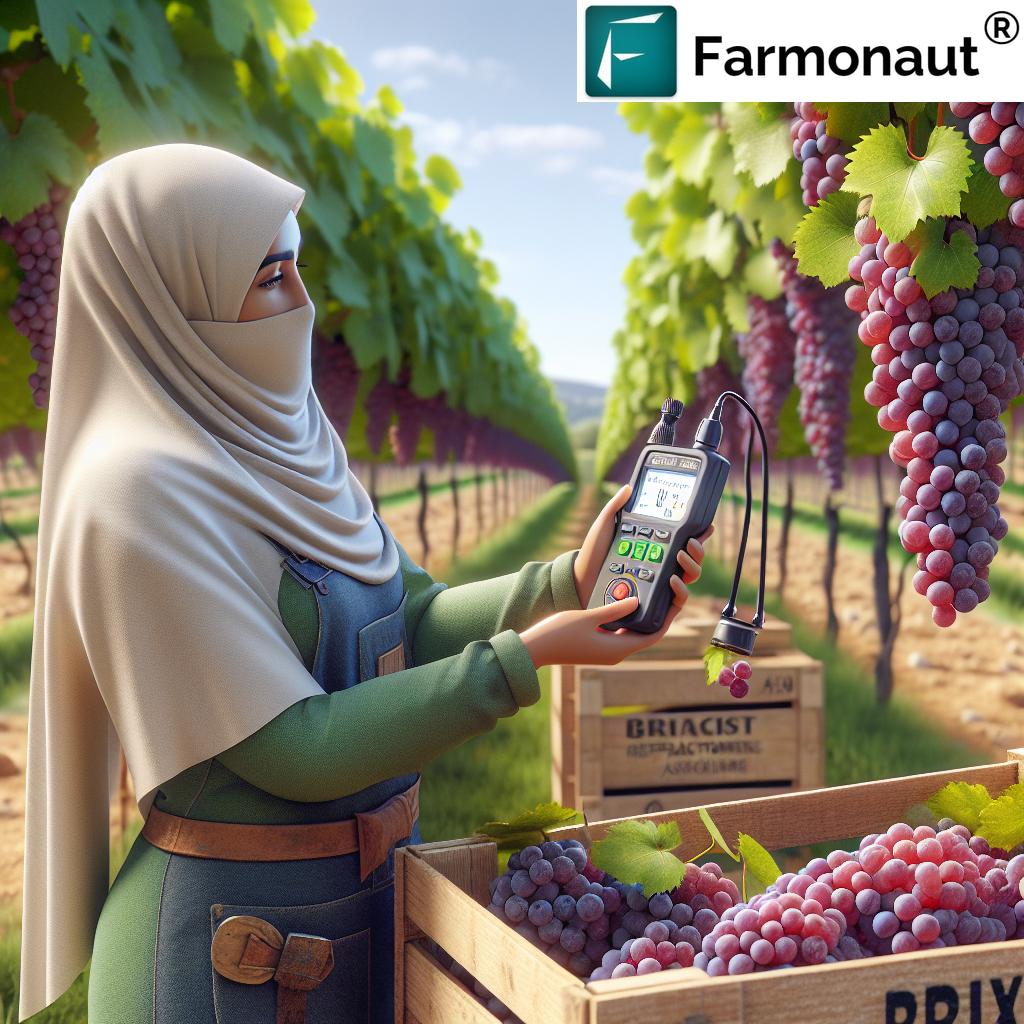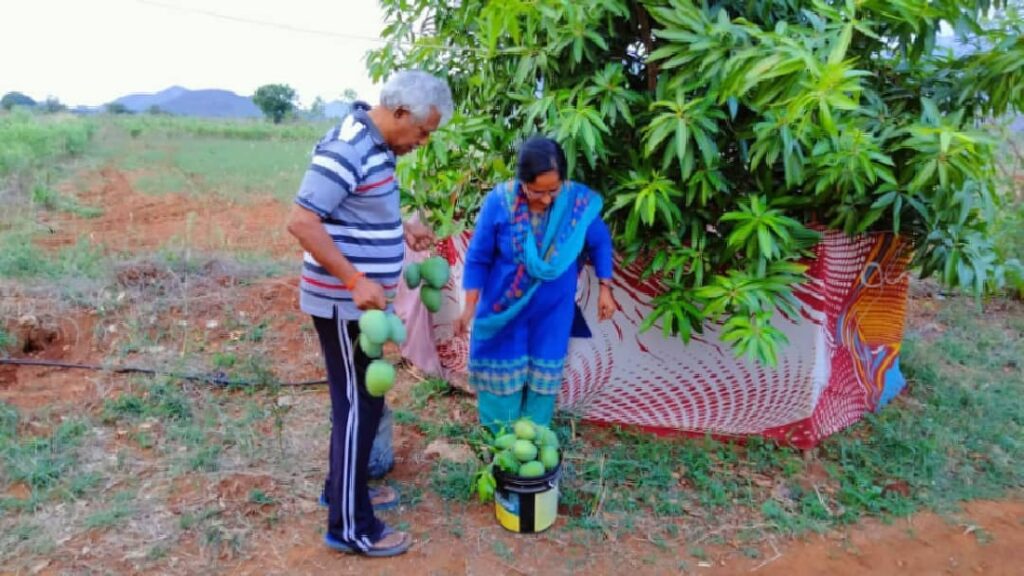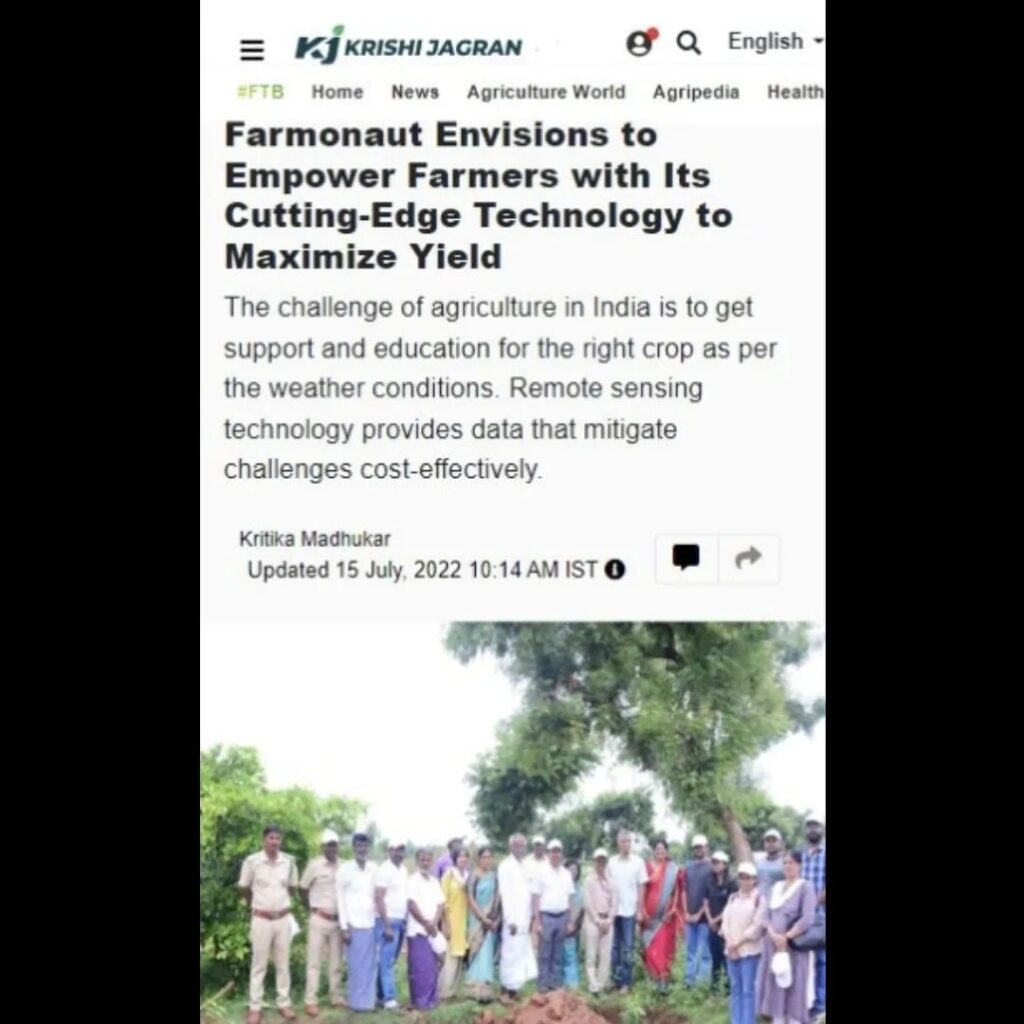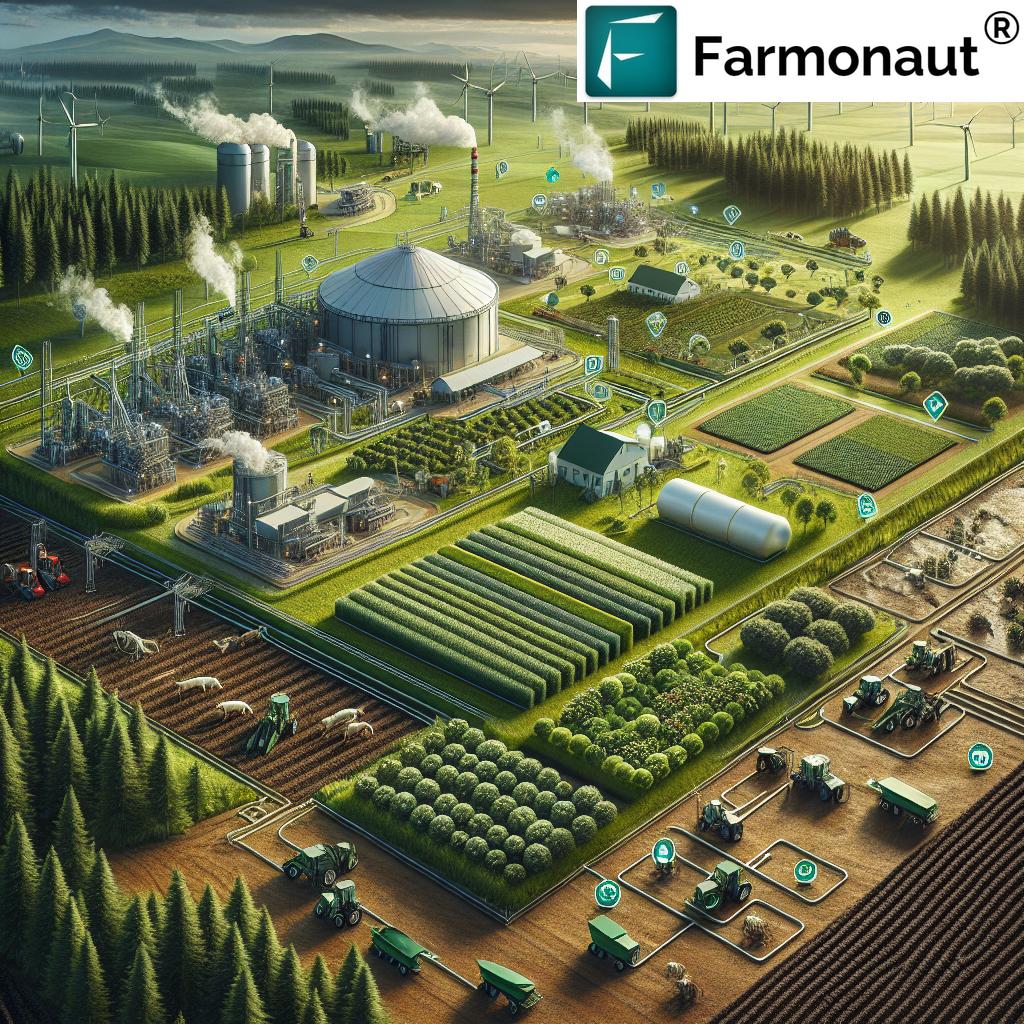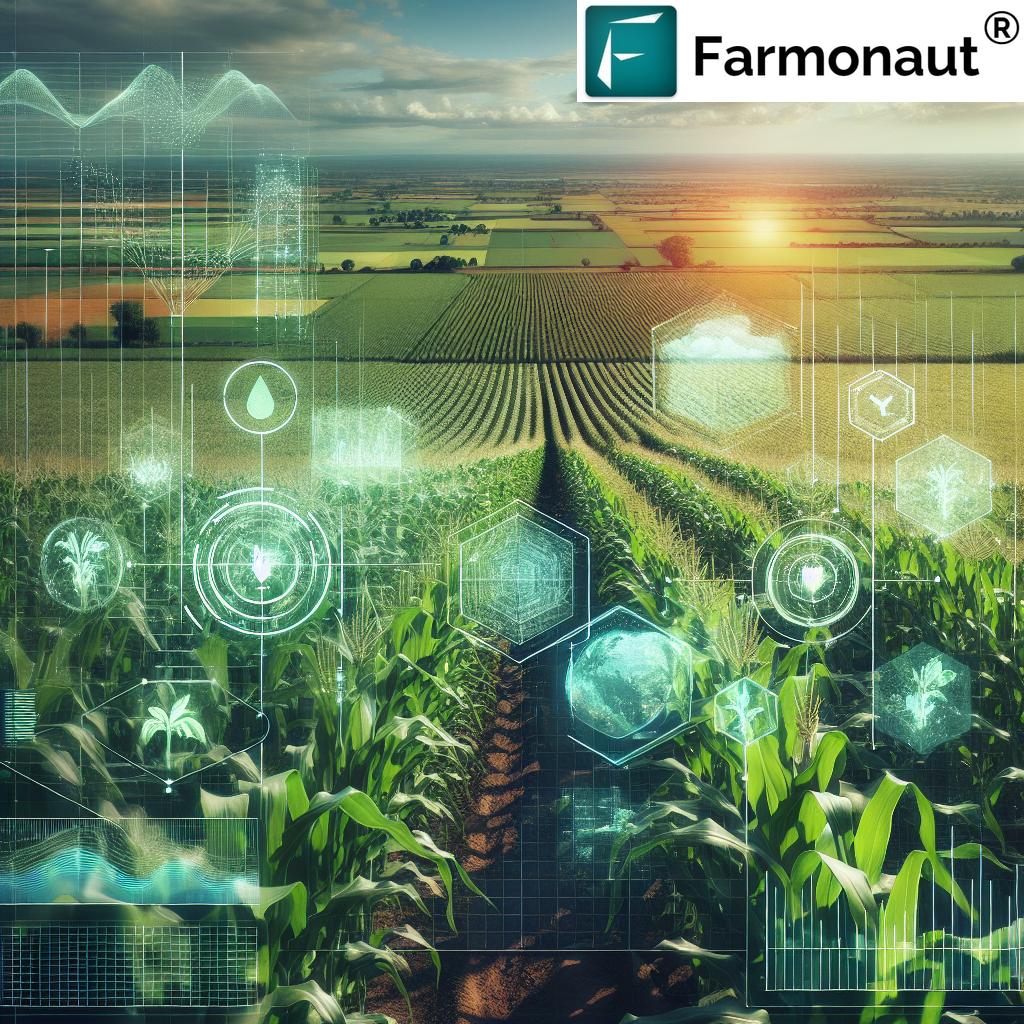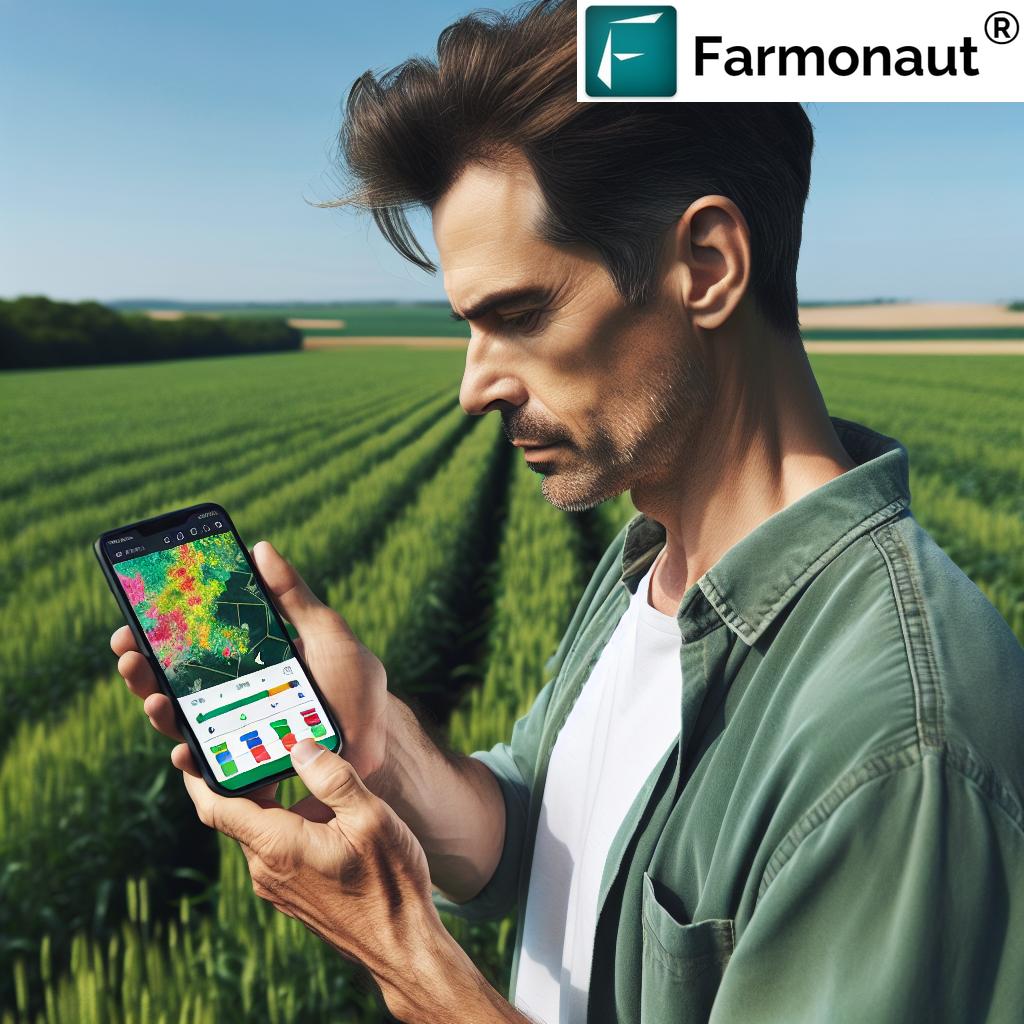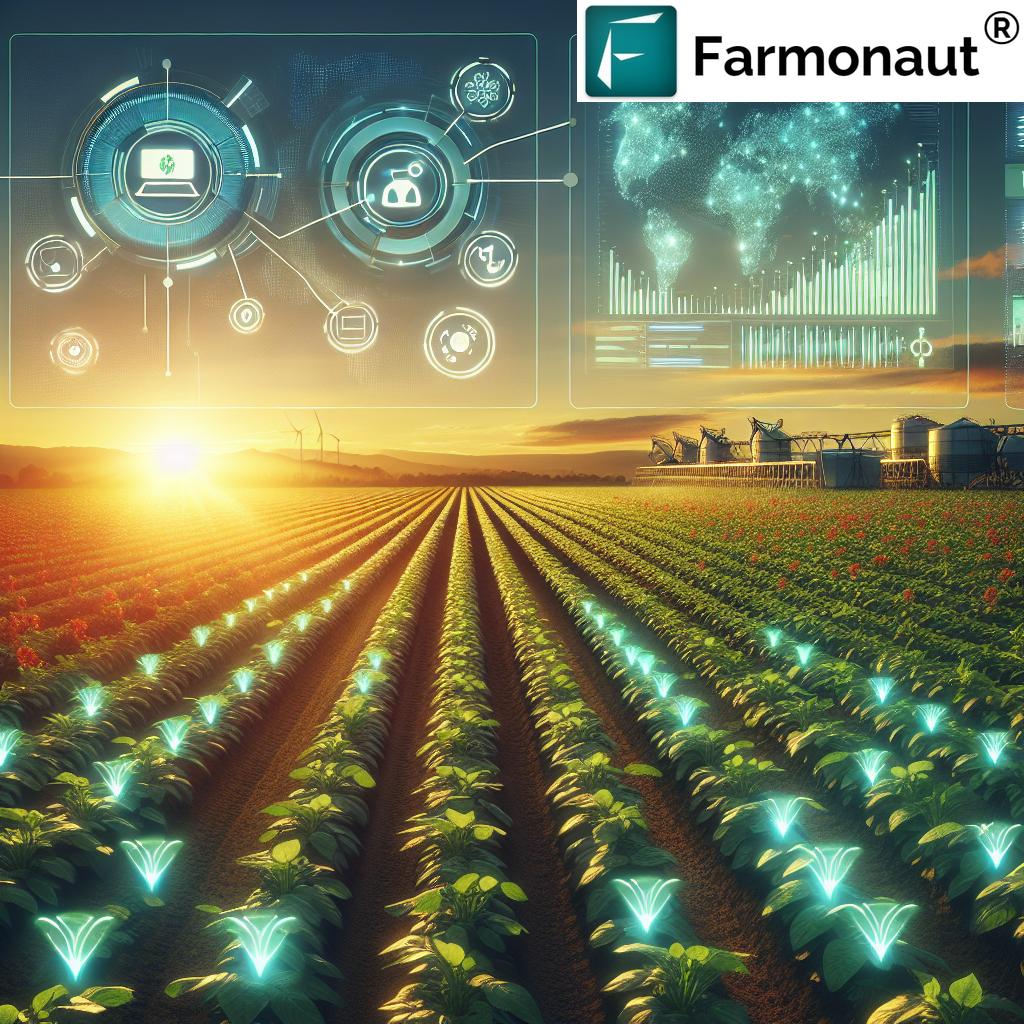
Revolutionizing Agriculture: Precision Farming with Satellite Monitoring and Geospatial Intelligence for Sustainable Crop Management
In the ever-evolving world of agriculture, we are witnessing a remarkable transformation driven by cutting-edge technologies. At the forefront of this revolution is the integration of satellite monitoring, geospatial intelligence, and precision farming techniques. These advancements are reshaping the way we approach crop management, soil analysis, and overall agricultural practices. In this comprehensive blog post, we’ll delve deep into the world of modern agriculture, exploring how these innovative technologies are paving the way for more sustainable and efficient farming methods.
The Rise of Satellite Monitoring in Agriculture
Satellite monitoring has emerged as a game-changer in the agricultural sector. By harnessing the power of high-resolution satellite imagery, farmers and agronomists can now gain unprecedented insights into their fields and crops. This technology allows for real-time crop monitoring, enabling timely interventions and informed decision-making.
Benefits of Satellite-Based Crop Monitoring
- Wide Coverage: Satellites can monitor vast areas of farmland simultaneously, providing a comprehensive view of entire regions.
- Frequent Updates: Regular satellite passes allow for continuous monitoring, capturing changes in crop health and field conditions over time.
- Non-Invasive: Unlike traditional field scouting, satellite monitoring doesn’t require physical presence in the fields, reducing disturbance to crops and soil.
- Cost-Effective: Compared to manual surveying or drone-based solutions, satellite monitoring offers a more economical option for large-scale crop assessment.
Key Applications of Satellite Monitoring in Agriculture
- Crop Health Assessment: By analyzing multispectral satellite imagery, we can detect early signs of crop stress, disease, or nutrient deficiencies.
- Yield Prediction: Advanced algorithms combine satellite data with historical yield information and weather patterns to forecast crop yields accurately.
- Water Management: Satellite-derived soil moisture maps help optimize irrigation practices, ensuring efficient water usage.
- Pest and Disease Detection: Early identification of pest infestations or disease outbreaks allows for targeted interventions, minimizing crop losses.
Geospatial Intelligence: The Backbone of Precision Agriculture
Geospatial intelligence (GEOINT) is revolutionizing the way we approach agricultural challenges. By combining satellite imagery, GPS data, and advanced analytics, GEOINT provides farmers with actionable insights for precision farming.
Components of Geospatial Intelligence in Agriculture
- GIS (Geographic Information Systems): GIS software integrates various data layers, allowing for comprehensive spatial analysis of agricultural landscapes.
- Remote Sensing: This technology captures and interprets data from a distance, including satellite and aerial imagery.
- GPS (Global Positioning System): Precise location data enables targeted interventions and accurate mapping of field boundaries.
- Data Analytics: Advanced algorithms process vast amounts of geospatial data to extract meaningful patterns and insights.
Applications of Geospatial Intelligence in Precision Farming
- Field Mapping: Create detailed maps of farm boundaries, soil types, and topography for better land management.
- Variable Rate Application (VRA): Optimize the application of fertilizers, pesticides, and seeds based on spatial variability within fields.
- Crop Rotation Planning: Analyze historical field data to determine optimal crop rotation strategies for improved soil health and yield.
- Precision Harvesting: Guide harvesting equipment to maximize efficiency and minimize crop losses.
Soil Analysis: The Foundation of Sustainable Agriculture
Understanding soil health is crucial for sustainable crop management. Modern soil analysis techniques, combined with satellite data, provide a comprehensive view of soil conditions across large agricultural areas.
Key Soil Parameters Monitored
- Soil Moisture: Accurate measurement of water content in the soil helps optimize irrigation practices.
- Organic Carbon: Monitoring soil organic carbon levels is essential for assessing soil fertility and carbon sequestration potential.
- Nutrient Content: Analysis of macronutrients (N, P, K) and micronutrients guides precise fertilizer application.
- pH Levels: Soil acidity or alkalinity affects nutrient availability and overall crop health.
Advanced Soil Analysis Techniques
- Spectral Analysis: Using satellite-based spectral data to estimate soil properties over large areas.
- In-Situ Sensors: Deployment of soil sensors for real-time monitoring of moisture and nutrient levels.
- Machine Learning Algorithms: Predicting soil characteristics based on historical data and environmental factors.
- Hyperspectral Imaging: Detailed soil composition analysis using high-resolution spectral data.
Weather Integration: Enhancing Agricultural Decision-Making
Accurate weather forecasting and historical climate data play a crucial role in modern agriculture. Integrating weather information with satellite monitoring and geospatial intelligence enables more precise farming practices.
Weather Data Sources for Agriculture
- Satellite-Based Weather Monitoring: Global coverage of atmospheric conditions and precipitation patterns.
- Ground Weather Stations: Local, high-precision weather data for specific agricultural regions.
- Numerical Weather Prediction Models: Advanced forecasting tools for short-term and seasonal predictions.
- Historical Climate Records: Long-term climate trends to inform crop selection and planting schedules.
Applications of Weather Data in Precision Agriculture
- Planting Date Optimization: Determine the best time to plant based on soil temperature and moisture conditions.
- Frost Risk Management: Early warning systems for potential frost events to protect sensitive crops.
- Pest and Disease Forecasting: Predict the likelihood of pest infestations or disease outbreaks based on weather conditions.
- Irrigation Scheduling: Optimize water usage by considering precipitation forecasts and evapotranspiration rates.
Crop Classification and Mapping: Enhancing Agricultural Intelligence
Accurate crop classification and mapping are essential components of modern agricultural management. These processes involve identifying and delineating different crop types across large areas, providing valuable information for various stakeholders in the agricultural sector.
Importance of Crop Classification
- Resource Allocation: Helps governments and organizations allocate resources effectively based on crop distribution.
- Market Intelligence: Provides insights into crop production trends, influencing market prices and trade decisions.
- Food Security Planning: Assists in assessing food production capabilities and potential shortages.
- Environmental Monitoring: Tracks changes in land use and crop patterns over time, aiding in sustainability efforts.
Advanced Techniques for Crop Classification
- Multi-Temporal Satellite Imagery: Analyzing images taken at different times during the growing season to identify crop types based on their unique growth patterns.
- Machine Learning Algorithms: Employing supervised and unsupervised learning techniques to automatically classify crops based on spectral signatures and other features.
- Phenology-Based Classification: Utilizing knowledge of crop growth stages and timing to distinguish between different crop types.
- Integration of SAR Data: Combining optical satellite imagery with Synthetic Aperture Radar (SAR) data for improved classification accuracy, especially in cloudy regions.
Yield Prediction: The Future of Crop Management
Accurate yield prediction is a critical aspect of modern agriculture, enabling farmers, agribusinesses, and policymakers to make informed decisions about crop management, market strategies, and food security planning.
Factors Influencing Yield Prediction
- Historical Yield Data: Past performance of crops in specific fields or regions.
- Satellite Imagery: Current crop health and growth status derived from multispectral satellite data.
- Weather Forecasts: Predictions of temperature, rainfall, and other meteorological factors affecting crop growth.
- Soil Conditions: Nutrient levels, moisture content, and other soil properties influencing crop productivity.
- Agronomic Practices: Information on planting dates, fertilizer application, and other management practices.
Advanced Yield Prediction Techniques
- Machine Learning Models: Utilizing artificial intelligence to analyze complex datasets and generate accurate yield forecasts.
- Crop Growth Simulation: Employing mathematical models that simulate crop development based on environmental factors and management practices.
- Remote Sensing Indices: Using vegetation indices derived from satellite imagery to estimate crop biomass and potential yield.
- Ensemble Forecasting: Combining multiple prediction models to improve overall accuracy and reliability of yield estimates.
Sustainable Agriculture: The Role of Technology in Conservation
As we face growing environmental challenges, the integration of advanced technologies in agriculture plays a crucial role in promoting sustainability and conservation efforts.
Key Areas of Focus for Sustainable Agriculture
- Soil Conservation: Implementing practices to maintain soil health and prevent erosion.
- Water Management: Optimizing water use efficiency through precision irrigation techniques.
- Biodiversity Preservation: Monitoring and protecting natural habitats within agricultural landscapes.
- Carbon Sequestration: Developing strategies to increase soil organic carbon and reduce greenhouse gas emissions.
Technological Approaches to Sustainable Farming
- Precision Agriculture: Using GPS-guided equipment and variable rate technology to minimize resource waste and environmental impact.
- Cover Crop Monitoring: Employing satellite imagery to assess the effectiveness of cover crops in improving soil health.
- Agroforestry Mapping: Utilizing remote sensing to plan and monitor integrated tree-crop systems for enhanced sustainability.
- Ecosystem Services Valuation: Developing tools to quantify and incentivize the environmental benefits provided by agricultural landscapes.
Forestry Management: Extending Geospatial Intelligence Beyond Croplands
While much of our focus has been on crop monitoring, it’s important to recognize the significant role that geospatial intelligence plays in forestry management. Sustainable forest management is crucial for maintaining biodiversity, combating climate change, and ensuring the long-term availability of timber resources.
Applications of Geospatial Technology in Forestry
- Forest Inventory: Using satellite imagery and LiDAR data to assess forest structure, biomass, and species composition.
- Deforestation Monitoring: Tracking forest cover changes over time to combat illegal logging and encroachment.
- Fire Risk Assessment: Analyzing vegetation dryness and weather patterns to predict and manage wildfire risks.
- Carbon Stock Estimation: Quantifying forest carbon sequestration potential to support climate change mitigation efforts.
Advanced Forestry Management Techniques
- Multi-Sensor Fusion: Combining data from optical, radar, and LiDAR sensors for comprehensive forest analysis.
- Time-Series Analysis: Monitoring long-term forest health trends and recovery patterns after disturbances.
- Habitat Connectivity Mapping: Using spatial analysis to identify and protect wildlife corridors within forested landscapes.
- Precision Forestry: Applying site-specific management techniques to optimize timber production and forest health.
The Future of Agricultural Earth Observation
As we look to the future, the field of agricultural earth observation is poised for even more exciting developments. Emerging technologies and innovative approaches are set to revolutionize how we monitor and manage our agricultural resources.
Emerging Trends in Agricultural Remote Sensing
- Hyperspectral Imaging: Providing detailed spectral information for more accurate crop and soil analysis.
- CubeSats and Nanosatellites: Increasing the frequency and affordability of satellite imagery for agriculture.
- Artificial Intelligence and Big Data: Enhancing the processing and interpretation of vast amounts of agricultural data.
- Internet of Things (IoT) Integration: Combining satellite data with ground-based sensors for comprehensive farm monitoring.
Future Applications and Possibilities
- Automated Crop Management Systems: AI-driven platforms that provide real-time recommendations for farm operations.
- Global Food Security Monitoring: Near real-time assessment of crop production and potential shortages on a global scale.
- Precision Gene Editing: Using geospatial data to inform targeted crop improvements through advanced breeding techniques.
- Climate-Resilient Agriculture: Developing adaptive strategies based on long-term earth observation data and climate models.
Comparison: Traditional Farming vs. Farmonaut System
| Features | Traditional Farming | Farmonaut System |
|---|---|---|
| Crop Monitoring | Manual field scouting, time-consuming and labor-intensive | Satellite-based real-time monitoring, covering large areas efficiently |
| Soil Analysis | Periodic soil sampling, limited spatial resolution | Continuous monitoring using satellite data and AI, high spatial resolution |
| Yield Prediction | Based on historical data and farmer’s experience | AI-powered predictions using satellite imagery, weather data, and historical yields |
| Weather Integration | Reliance on general weather forecasts | Field-specific weather data and forecasts integrated with crop monitoring |
| Sustainability Practices | Often based on general guidelines | Data-driven sustainability recommendations tailored to specific field conditions |
Integrating Farmonaut’s Solutions into Modern Agriculture
As we’ve explored the various aspects of precision agriculture and geospatial intelligence, it’s clear that innovative solutions like those offered by Farmonaut play a crucial role in advancing the industry. Let’s take a closer look at how Farmonaut’s technology integrates into the modern agricultural landscape.
Farmonaut’s Key Features
- High-Resolution Satellite Imagery: Providing farmers with detailed, up-to-date views of their fields.
- AI-Powered Crop Analysis: Utilizing advanced algorithms to detect crop health issues and growth patterns.
- Weather Integration: Incorporating local weather data and forecasts for more accurate farming decisions.
- Soil Moisture Analytics: Offering insights into soil water content to optimize irrigation practices.
- Yield Prediction Tools: Helping farmers estimate crop yields based on multiple data sources.
Benefits of Adopting Farmonaut’s Technology
- Increased Efficiency: By providing real-time data and insights, Farmonaut helps farmers make timely decisions, reducing waste and improving resource allocation.
- Cost Savings: Precision application of inputs like water, fertilizers, and pesticides leads to significant cost reductions.
- Environmental Sustainability: Data-driven farming practices promote more sustainable use of resources and reduce environmental impact.
- Improved Crop Quality: Early detection of issues and optimized management practices result in higher quality produce.
- Risk Mitigation: Advanced forecasting and monitoring help farmers prepare for and mitigate potential risks to their crops.
Getting Started with Farmonaut
For farmers, agronomists, and agricultural businesses interested in leveraging the power of satellite monitoring and geospatial intelligence, Farmonaut offers accessible solutions to get started:
- Web Application: Access Farmonaut’s platform through your web browser at https://farmonaut.com/app_redirect
- Mobile Apps: Download the Farmonaut app for on-the-go access:
- Android: Google Play Store
- iOS: Apple App Store
- API Access: For developers and businesses looking to integrate Farmonaut’s data into their own systems:
- API Documentation: Farmonaut API Docs
- API Endpoint: https://sat.farmonaut.com/api
Subscription Options
To access Farmonaut’s full range of features and benefits, consider subscribing to our service:
Frequently Asked Questions (FAQ)
Q: What is satellite monitoring in agriculture?
A: Satellite monitoring in agriculture involves using high-resolution satellite imagery to observe and analyze crop health, soil conditions, and other field characteristics from space. This technology provides farmers with valuable insights for decision-making without the need for physical field visits.
Q: How accurate is satellite-based crop monitoring?
A: Modern satellite monitoring systems, like those used by Farmonaut, can achieve high levels of accuracy. Depending on the specific application, accuracy rates for crop health assessment, yield prediction, and soil moisture estimation can range from 80% to 95% or higher.
Q: Can satellite monitoring replace traditional field scouting?
A: While satellite monitoring significantly reduces the need for extensive field scouting, it doesn’t entirely replace it. Instead, it complements traditional methods by identifying areas that require closer inspection, making field visits more targeted and efficient.
Q: How often is satellite imagery updated?
A: The frequency of satellite imagery updates varies depending on the satellite system and service provider. Farmonaut typically offers updates every 3-5 days, with some areas receiving more frequent coverage.
Q: What types of crops can be monitored using satellite technology?
A: Satellite monitoring can be used for a wide range of crops, including cereal grains (wheat, rice, corn), oilseeds (soybeans, canola), fruits, vegetables, and cash crops like cotton and sugarcane. The technology is adaptable to various crop types and growing conditions.
Q: How does weather data integration improve farming decisions?
A: Integrating weather data with satellite monitoring allows for more accurate predictions of crop growth, pest and disease risks, and optimal timing for various farm operations. This combined approach enables farmers to make proactive decisions based on both current field conditions and upcoming weather patterns.
Q: Can satellite monitoring help with sustainable farming practices?
A: Yes, satellite monitoring is a powerful tool for promoting sustainable agriculture. It helps optimize resource use (water, fertilizers, pesticides), reduce environmental impact, and monitor conservation efforts such as cover cropping and reduced tillage practices.
Q: Is Farmonaut’s technology suitable for small-scale farmers?
A: Absolutely. Farmonaut’s solutions are designed to be accessible and beneficial for farmers of all scales, from small family farms to large agricultural enterprises. The user-friendly interface and affordable pricing options make it a valuable tool for small-scale farmers looking to improve their productivity and sustainability.
Q: How does Farmonaut ensure the privacy and security of farm data?
A: Farmonaut takes data privacy and security very seriously. We employ industry-standard encryption and security protocols to protect all user data. Farm-specific information is kept confidential and is not shared with third parties without explicit user consent.
Q: Can Farmonaut’s system be integrated with other farm management software?
A: Yes, Farmonaut offers API access that allows for integration with various farm management systems and software. This enables farmers and agribusinesses to incorporate Farmonaut’s satellite data and insights into their existing workflows and decision-making processes.
Conclusion
As we’ve explored throughout this comprehensive guide, the integration of satellite monitoring, geospatial intelligence, and advanced analytics is revolutionizing the agricultural sector. These technologies offer unprecedented insights into crop health, soil conditions, and environmental factors, enabling farmers to make more informed decisions and adopt sustainable practices.
Farmonaut stands at the forefront of this agricultural revolution, providing accessible and powerful tools that empower farmers of all scales to embrace precision agriculture. By harnessing the power of satellite imagery, AI-driven analytics, and real-time data integration, Farmonaut is helping to shape a more efficient, productive, and sustainable future for global agriculture.
As we look to the future, the continued development of these technologies promises even greater advancements in crop management, yield prediction, and environmental stewardship. By adopting these innovative solutions, farmers, agronomists, and agricultural businesses can not only improve their productivity and profitability but also contribute to the broader goals of food security and environmental sustainability.
We encourage you to explore how Farmonaut’s solutions can benefit your agricultural operations. Whether you’re a small-scale farmer looking to optimize your crop management or a large agribusiness seeking to integrate cutting-edge geospatial intelligence into your processes, Farmonaut offers the tools and expertise to help you succeed in the evolving landscape of modern agriculture.
